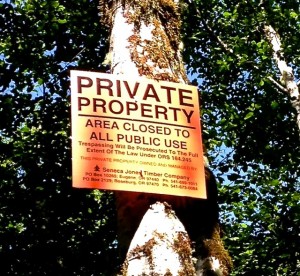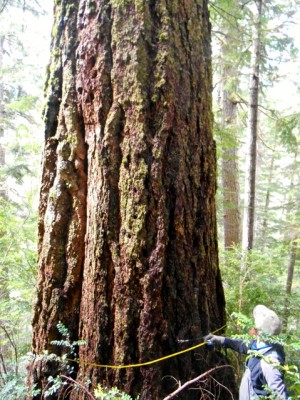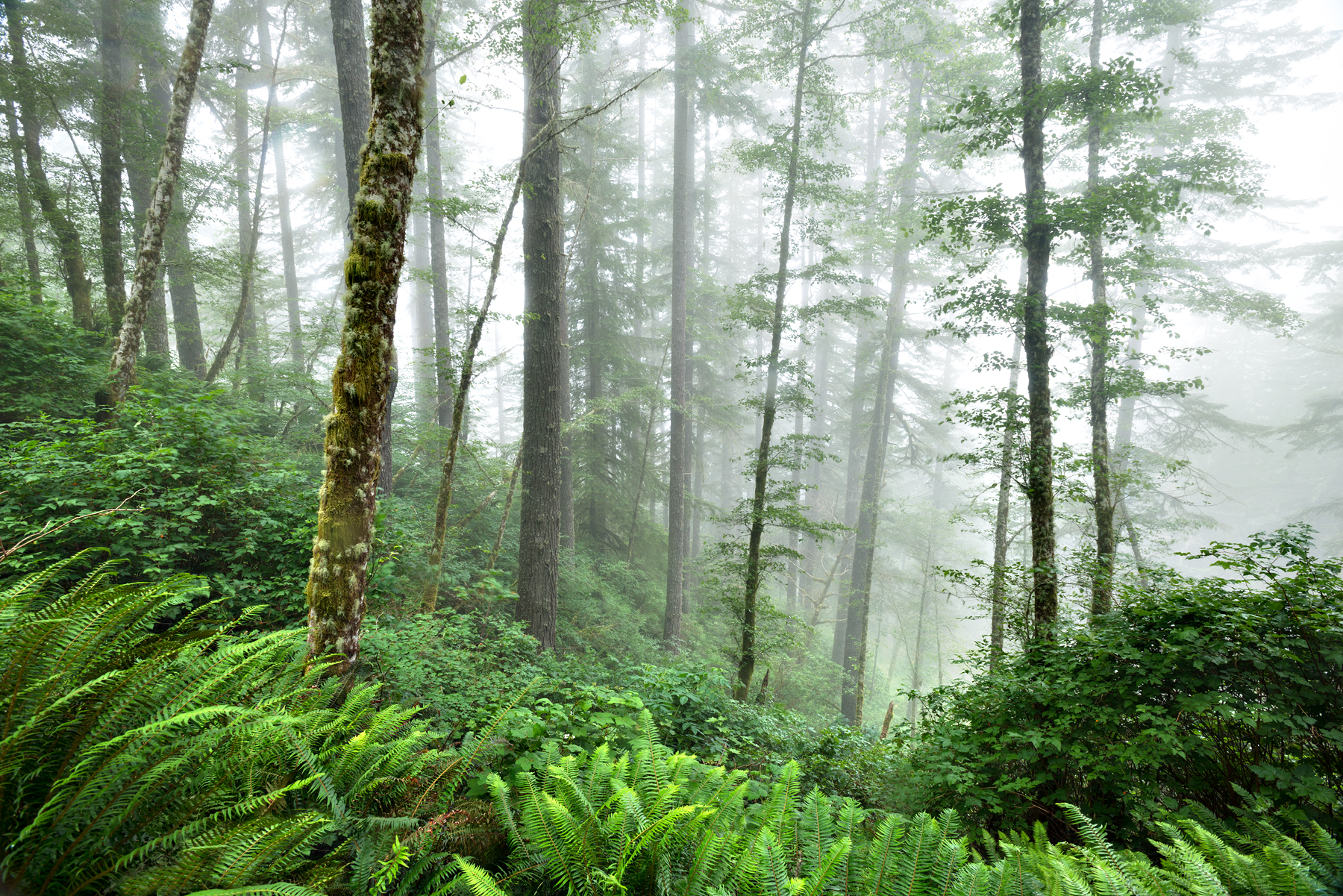On May 9, 2017 the State Land Board voted unanimously to keep the Elliott under public ownership, and lawmakers followed that up on July 3, 2017 by advancing $100-million in state bonding revenue to protect the Elliott forever! The Elliott is now saved from the saws, and Cascadia Wildlands remains a part of the ongoing process to develop its 50-year management plan, along side a number of other key stakeholders.
The Elliott State Forest is a 93,000-acre publicly owned forest located just inland from the mouth of the Umpqua River. The Elliott State Forest lies immediately south of Devil’s Staircase in the Oregon Coast Range. Loon Lake is on its east border, Reedsport is near its northwest corner and Coos Bay is near its southwest corner. Surrounded by massive swaths of privately owned industrial tree farms, the public forests of the Elliott offer rare, native habitat that has never been logged. As a consequence, this coastal rainforest offers some of the finest remaining habitat in the Oregon Coast Range for a host of threatened and endangered species, including Coho salmon, marbled murrelet and the northern spotted owl.
Much of the Elliott burned in the settler-started 1868 Coos Bay fire which burned across nearly 300,000 acres from Scottsburg south to Coos Bay. The forest has grown back naturally since the fire with the forest nearing 150 years of age today. Residual pockets of old-growth that survived the fire, some up to 500 years old, can also be found. Currently, this forest and the animals that live there, are in jeopardy. The Oregon Department of Forestry, the state agency in charge of our Elliott State Forest, auctioned off the rights to clearcut up to 850 acres of native forest to the highest bidder each year until they were stopped by a lawsuit in 2013.
The Elliott became the first state forest in 1930. It is named after Francis Elliott, Oregon’s first state forester, who worked for many years to create the forest by trading scattered state “school fund” lands for one large block of land. Until recently, the forest was being sacrificed in a “clearcuts for kids” scheme and has left the Elliott a fragmented landscape which will have disastrous consequences for two older forest dependent species in particular: northern spotted owl and marbled murrelet.
Northern Spotted Owl
In 1993, there were 69 spotted owls on the Elliott. Recognizing that the Elliott owl population was in pretty good shape in spite of its peril elsewhere, the US Fish and Wildlife Service (FWS) made a deal with Oregon in 1995 to allow them cut timber in the forest provided they took steps to maintain a viable population of spotted owls in the forest. The FWS set the number and the State of Oregon promised to protect 26 spotted owls through 2055 (by not clearcutting their nest sites). In exchange, Oregon could “take” (kill) 43 owls. This deal is known as the 1995 Habitat Conservation Plan (HCP).
Operating under the HCP the owl population on the Elliott plummeted down to 26 owls by 1998. The ODF had taken all the owls they were allowed to take over the 60 year period in just the first few years. Today, about 25 northern spotted owls (11 pairs) live on the Elliott State Forest. However, in order to increase the cut on the Elliott, the state of Oregon went out on a limb and recently abandoned the HCP and broke the mitigation promises it made as part of the 1995 HCP. The new 2012 Elliott plan called for a nearly 40% increase in clearcutting with an average of 850 acres of native rainforest clearcut each year. The new plan did not have the support of the federal fish and wildlife experts.
Marbled Murrelet
The murrelet is a remarkable seabird on the brink of extinction. Like all seabirds, murrelets have webfeet and eat only fish. Unlike other seabirds, murrelets depend on big trees near the ocean to nest and raise its young. It doesn’t build a stick nest. Instead, it lays an egg in a depression of moss on a large limb. Since most of Oregon’s coastal forests have been converted to young tree plantations, places with big trees, like the Elliott, are critical to the murrelets continual survival.
Murrelets are very secretive in where they lay their egg. Murrelet surveys can detect nesting murrelets in an area, so the entire area must be protected, as the exact nest tree site is usually impossible to find. Large protected areas are also important because 90% of nest failures are due to predation from jays and crows (corvids), which can predate nests on edges of forests, but not deep in forest interiors. Murrelets simply need old trees near the ocean in forest patches large enough to protect them from predation.
Because much of Oregon’s Coast Range has been previously clearcut and is seriously fragmented, optimal interior forest habitat list limited. The Elliott provides prime nesting habitat. When the seabird is detected in the forest, the state of Oregon is required to protect it by designating a Marbled Murrelet Management Areas (MMMA). However, the size of the MMMA’s the state designated got smaller and small each year. These inadequate reserves, and other problems, were litigated by Cascadia Wildlands and our partners. In 2013, the lawsuit was settled when the State Land Board agreed to drop 28 old growth timber sales on the Elliott and Tillamook State Forests.
Salmon and Other Fish
The Elliott State Forest is home to a number of threatened and rare aquatic species in the Umpqua, Coos, and Ten Mile Lakes watershed. The Oregon Department of Fish and Wildlife says the Elliott supports “the highest Coho production on the Oregon Coast”.
Ten sensitive fish species are present, or likely present in the Elliott, including Coho salmon, Chinook salmon, chum salmon, steelhead trout, coastal cutthroat trout, Umpqua chub, Pacific lamprey, western brook lamprey, river lamprey, and the Millicoma longnose dace.
The new 2011 Forest Management Plan was found inadequate for aquatic species by the federal fish experts and was subject to a number of critical reviews. The state of Oregon did not substantively change its streamside forest management approach even after getting the critical feedback.
Climate Change Mitigation
Scientists have found that coastal temperate rainforests in Oregon, like the Elliott, has the potential to store more carbon per acre than virtually any other place in the world, including tropical rainforests. Cascadia Wildlands has highlighted the Elliott’s incomparable ability to store carbon as a possible funding source for school children. When logged, these old forests release extreme amounts of harmful carbon dioxide into the atmosphere, further exacerbating the global climate crisis. Cascadia Wildlands also advocates for restoration thinning in the forest’s dense tree farms to generate revenue for school children.
Selling the Elliott
 When the Oregon Department of State Lands settled our marbled murrelet lawsuit, they determined that correctly avoiding murrelet nests means Oregon can only log 15 mmbf a year on the Elliott. This is too little for their liking (they want to log 45 mmbf a year). Seneca put up these signs as soon as they purchased part of the Elliott State Forest.
When the Oregon Department of State Lands settled our marbled murrelet lawsuit, they determined that correctly avoiding murrelet nests means Oregon can only log 15 mmbf a year on the Elliott. This is too little for their liking (they want to log 45 mmbf a year). Seneca put up these signs as soon as they purchased part of the Elliott State Forest.
Because of the new restrictions on harming murrelets, the State Land Board made a decision on December 10, 2013 to sell 2,714 acres of the Elliott State Forest by competitive bid to “test” this as a solution for the entire Elliott. (They received over 1,200 comments from Oregonians asking them to protect these important lands instead).
Three of the five parcels were auctioned in the spring of 2014. The bidding closed on March 28. The winners were Seneca Logging, who bought East Hakki Ridge (788 acres) and Roseburg Forest Products, who bought Benson Ridge (355 acres) and Adams Ridge One (310 acres).
The state did a timber cruise which found that the timber on 2,714 acres dropped in value, from $22 million dollars down to $3.5 million dollars because of logging restrictions that should be in place for the marbled murrelet habitat. But the same report disclosed the result of interviews with the timber industry, which said they could clearcut it in spite of the restrictions, because they could “skirt the law without consequences”.


